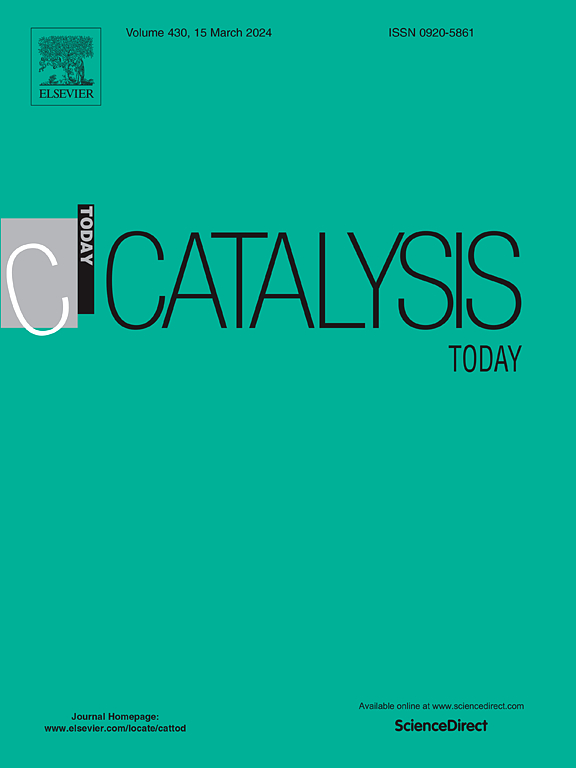超声合成零价铁纳米颗粒吸附孔雀石绿染料
IF 5.2
2区 化学
Q1 CHEMISTRY, APPLIED
引用次数: 0
摘要
研究了超声(US)辅助零价铁纳米颗粒(nZVI)的合成及其在孔雀石绿(MG)染料吸附中的应用。采用x射线衍射(XRD)、N2吸附-解吸、振动样品磁强计(VSM)、傅里叶变换红外光谱(FTIR)、拉曼光谱、扫描电镜(SEM)和高分辨率透射电子(HR-TEM)、能量色散x射线能谱(EDX)和x射线光电子能谱(XPS)等手段对nZVI进行了表征,确定了其晶体结构、磁性能、化学成分和形貌。在实验室条件下,利用紫外可见光谱(UV-Vis)评价了nZVI对MG的吸附效果,其最大吸附量为97% %,可降低染料浓度。考察了nZVI浓度和反应时间对吸附效率的影响。结果表明,在nZVI的存在下,MG可以快速脱色,突出了这种方法在染料污染废水的环境修复中的潜力。这种方法在可持续性和效率方面具有显著的优势,为纳米技术在污染水修复中的应用开辟了新的前景。本文章由计算机程序翻译,如有差异,请以英文原文为准。
Zero-valent iron nanoparticles synthesized by ultrasound for the adsorption of malachite green dye
This study presents the synthesis of ultrasound (US) assisted zero-valent iron nanoparticles (nZVI) and their application in the adsorption of the dye malachite green (MG). The nZVI were characterized by X-ray diffraction (XRD), N2 adsorption-desorption, Vibrating Sample Magnetometry (VSM), Fourier-transform Infrared Spectroscopy (FTIR), Raman spectroscopy, Scanning Electron Microscopy (SEM) and High-Resolution Transmission Electron (HR-TEM), Energy-dispersive X-ray Spectroscopy (EDX), and X-ray Photoelectron Spectroscopy (XPS), to determine their crystalline structure, magnetic properties, chemical composition and morphology. The effectiveness of nZVI in the adsorption of MG was evaluated under laboratory conditions using ultraviolet-visible spectroscopy (UV-Vis), which showed a maximum capacity of 97 % to reduce the dye concentration. The influence of the nZVI concentration and reaction time on the adsorption efficiency was investigated. The results indicate a rapid decolorization of MG in the presence of nZVI, highlighting the potential of this methodology for the environmental remediation of dye-contaminated wastewater. This approach offers significant advantages in terms of sustainability and efficiency, opening new perspectives in the application of nanotechnology for the remediation of contaminated water.
求助全文
通过发布文献求助,成功后即可免费获取论文全文。
去求助
来源期刊

Catalysis Today
化学-工程:化工
CiteScore
11.50
自引率
3.80%
发文量
573
审稿时长
2.9 months
期刊介绍:
Catalysis Today focuses on the rapid publication of original invited papers devoted to currently important topics in catalysis and related subjects. The journal only publishes special issues (Proposing a Catalysis Today Special Issue), each of which is supervised by Guest Editors who recruit individual papers and oversee the peer review process. Catalysis Today offers researchers in the field of catalysis in-depth overviews of topical issues.
Both fundamental and applied aspects of catalysis are covered. Subjects such as catalysis of immobilized organometallic and biocatalytic systems are welcome. Subjects related to catalysis such as experimental techniques, adsorption, process technology, synthesis, in situ characterization, computational, theoretical modeling, imaging and others are included if there is a clear relationship to catalysis.
 求助内容:
求助内容: 应助结果提醒方式:
应助结果提醒方式:


